I’m sure you’ve all heard the terms double cream and triple cream cheeses thrown around quite a bit. But do you know the difference between the two? In this article, we’ll talk about what they have in common, why the amount of cream matters and give you popular examples of each type of cheese.
SEE ALSO: Why some soft cheeses ooze when they are ripe →
Exploring double cream and triple cream cheeses
When it comes to indulgent cheese experiences, double cream and triple cream cheeses are a league of their own. Despite their subtle differences, they share common traits that make them a decadent delight for cheese lovers.
Richness personified
Both double cream and triple cream cheeses are characterised by their high fat content. Double cream cheeses contain at least 60% milk fat, while triple cream cheeses take it a step further with a fat content that can go up to 75%.
The butterfat percentage actually refers to the percentage of dry matter in the cheese that is fat. Because those cheeses are usually not pressed and are quite young, they typically contain about 50% water.
So, effectively, a double cream is around 30% butterfat, and a triple cream is 37.5%.
This abundance of creaminess gives these cheeses their luxurious, velvety texture, making every bite a sumptuous experience.
Decadent origins
Originating from various corners of France, these cheeses have a rich history steeped in culinary tradition. Indeed, both double cream and triple cream cheeses have been crafted by skilled artisans for centuries, embodying the essence of gourmet indulgence.
Soft and bloomy rind
A common characteristic among many double and triple cream cheeses is their soft, bloomy rind. This signature exterior develops during the ageing process, adding an intriguing complexity to the cheese’s texture and flavour.
Beneath the velvety rind lies a creamy, gooey interior that’s a true delicacy.
Versatility in pairings
Furthermore, double cream and triple cream cheeses are incredibly versatile in culinary applications. They pair wonderfully with a variety of accompaniments, such as fresh fruits, crusty bread and even honey.
Their rich, buttery flavours make them excellent companions for both sweet and savoury elements, creating a harmonious balance that tantalises the taste buds.
Gourmet delights
Often associated with fine dining and gourmet experiences, both double cream and triple cream cheeses have found their place on the menus of high-end restaurants and cheese platters at elegant gatherings.
Their ability to elevate the dining experience with their unparalleled creaminess and nuanced flavours is a testament to their culinary appeal.
Now that we’ve got the basics out of the way, let’s take a closer look at each variety, starting with double cream cheeses.
What are double cream cheeses?
Let’s dive into the world of double cream cheeses, where every bite is a heavenly experience. But first, what exactly are double cream cheeses?
Definition
Double cream cheeses are a special category of cheeses known for their high fat content. The term “double cream” refers to the double dose of cream added during the cheesemaking process. This extra creaminess results in a smooth, luxurious texture that practically melts in your mouth.
History of double cream cheeses
The origins of double cream cheeses can be traced back to 8th century France. In the lush dairy farms of France, the concept of enriching cheese with extra cream has been a culinary tradition for centuries.
These cheeses were often considered a delicacy, reserved for special occasions and esteemed guests, symbolising indulgence and opulence.
Production
Crafting double cream cheeses is an art that involves meticulous precision. First, high-quality milk is carefully sourced, ensuring its richness and freshness. During the cheesemaking process, additional cream is incorporated, elevating the fat content significantly.
This infusion of cream not only enhances the texture but also contributes to the cheese’s characteristic buttery flavour. The cheese is then aged to perfection, allowing its flavours to mature and develop.
What do double cream cheeses taste like?
When you encounter a double cream cheese, your senses are in for a treat.
Texture: The texture is velvety and sumptuously creamy, making it incredibly spreadable. Each bite feels like a luxurious caress on your palate.
Flavour: Double cream cheeses boast a rich, buttery flavour profile. You’ll detect subtle hints of sweetness, complemented by a mild tanginess that adds depth to the overall taste.
Aroma: Finally, the aroma is inviting and comforting, reminiscent of fresh dairy with a hint of earthiness. It teases your nostrils, preparing you for the delightful taste experience ahead.
Famous examples of double cream cheeses
While traditional Brie and Camembert do not classify as double cream cheeses, there are many commercial versions made around the world that do. We’ve lined up some of the best examples for you.
Grand Fleuri
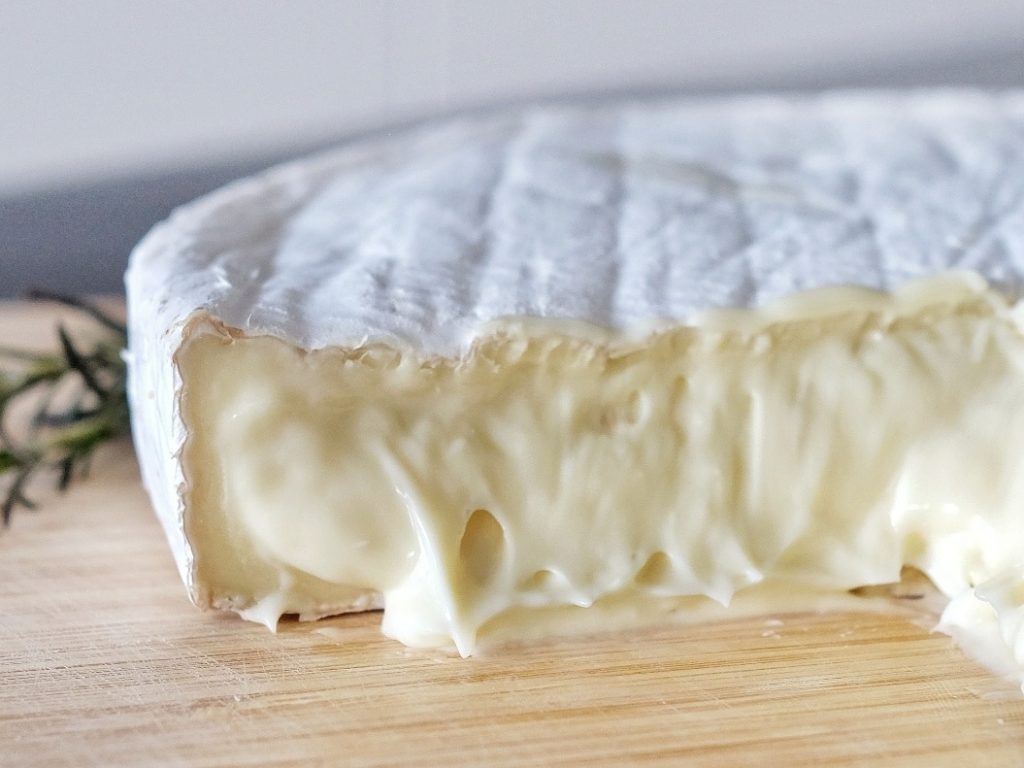
Grand Fleuri is a large soft white mould cheese made by L’Artisan Cheese Organic in Mortlake, Victoria. When Matthieu Megard moved to Australia in the early 2000’s, he set out to take the Melbourne artisanal cheese industry on by storm.
Grand Fleuri is his ode to the classic French Double Brie. This ultimate party cheese has a delicate white mould rind wrapped around a straw-coloured paste. As it ripens, the insides become decadently creamy and oozy.
Furthermore, Grand Fleuri’s aroma develops notes of mushrooms and it has a rich buttery texture with a long creamy finish and surprising depth.
Cremont
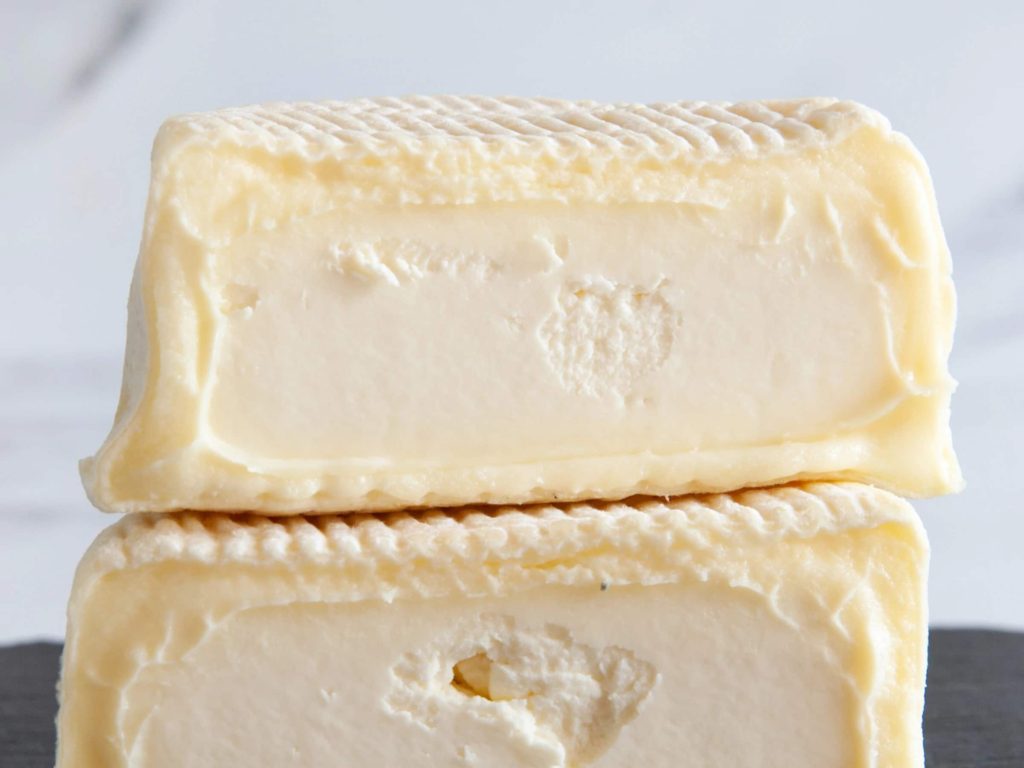
Next, Cremont is a mixed-milk cheese made by Vermont Creamery in the United States. The cheesemakers use a combination of fresh local cow’s milk, goat’s milk, and a hint of their own Vermont Cream.
The goat’s milk comes from one of twenty Vermont goat dairies that have a long-term relationship with Vermont Creamery. And the cow’s milk comes from a local cooperative of 500 family dairy farmers in northern Vermont.
Cremont’s texture is delicate, soft and yielding. Flavours are slightly tangy and nutty with a hint of crème fraîche, hazelnuts and butter. For a cheese that is made so far away from Ile-de-France and Seine-et-Marne, it bears a lot of similarities with the French Double Brie.
Fromager d’Affinois Double Cream
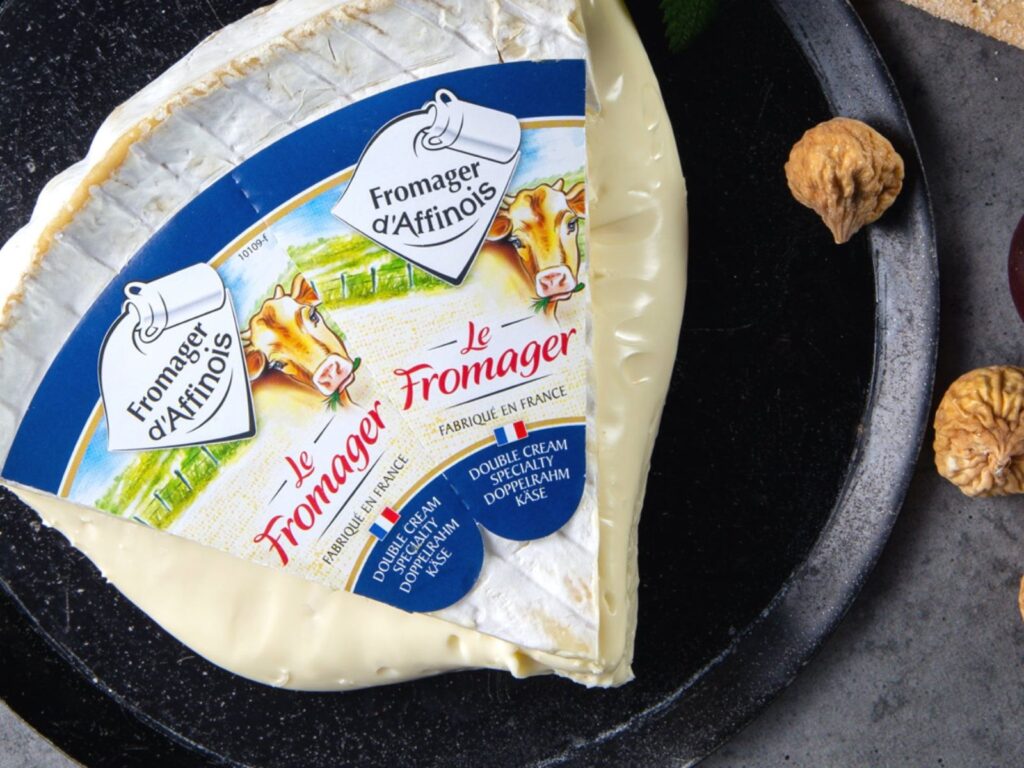
Even though it is often the subject of contempt from turophiles, there is no denying the popularity of Guilloteau’s Fromager d’Affinois. This double cream cheese is made on a hugely commercial scale in the Rhônes Alpes region of France from pasteurised milk using ultrafiltration.
It has become renowned around the world for its incredible oozy texture and its consistency across batches. You can know exactly what to expect from any wheel of this cheese. As for the flavour? Well, it is very mild and we were hard-pressed to find anything note-worthy.
What are triple cream cheeses?
Without a doubt, triple cream cheeses are renowned for their unparalleled richness and luxurious texture. Let’s delve into the delightful universe of triple cream cheeses, exploring their definition, intriguing history, meticulous production and irresistible organoleptic properties.
Definition
Triple cream cheeses are a subset of soft white mould cheeses characterised by an incredibly high fat content. To earn the “triple cream” designation, these cheeses must contain a minimum of 75% milk fat relative to the dry matter.
This surplus of cream gives these cheeses an extraordinarily creamy and buttery texture, setting them apart as some of the most decadent cheeses in existence.
History of triple cream cheeses
The origins of triple cream cheeses can be traced back to the late 19th century. Compared to double creams, triple creams are a much newer proposition. The first one of its kind, Le Magnum, appeared on the scene in the late nineteenth century. You might know it by its current name, Brillat-Savarin which, incidentally, is the first example we’ll have for you further down.
Over the years, these experiments evolved into what we now know as triple cream cheeses, transforming cheese indulgence into an art form.
Production
Crafting triple cream cheeses is a meticulous process that demands expertise and precision. As always, its starts with high-quality milk which is then curdled using specific enzymes.
What sets triple cream cheeses apart is the addition of extra cream during the cheesemaking process. This surplus cream is often added after curdling, resulting in an exceptionally rich curd.
The cheese is then moulded and aged for a few weeks, allowing its flavours to develop, while its texture becomes divinely creamy.
What do triple cream cheeses taste like?
Triple cream cheeses offer a sensory experience like no other.
Texture: Silky, velvety and almost decadently smooth, triple cream cheeses have a melt-in-your-mouth quality. The texture is so lush that each bite feels like a heavenly embrace on your palate.
Flavour: The flavour profile of triple cream cheeses is heavenly, boasting a delicate balance between buttery sweetness and subtle tanginess. There’s a luxuriousness to the taste, accentuated by the high-fat content, creating a lingering richness that dances on your taste buds.
Aroma: The aroma is inviting, carrying hints of fresh cream and a mild earthiness. It prepares you for the exquisite taste experience, making your anticipation all the more delightful.
Famous examples of triple cream cheeses
We’ve rounded up some of the most famous versions of this decadent cheese from France and the USA.
Brillat-Savarin
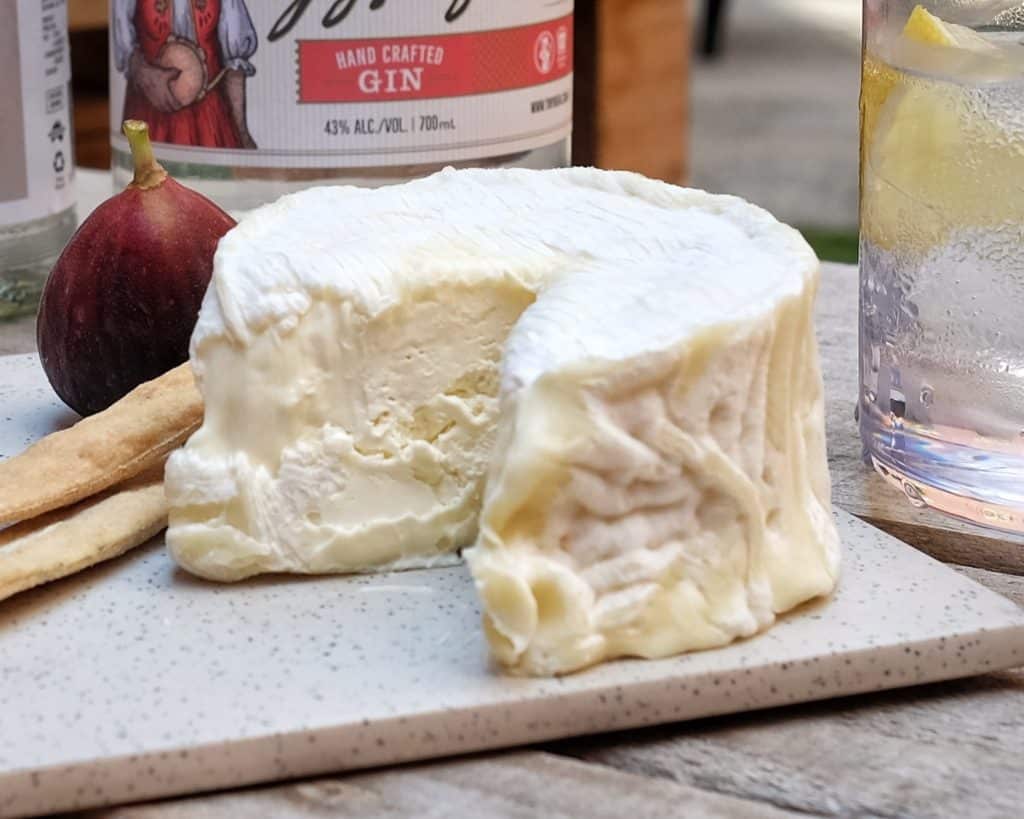
Brillat-Savarin is a soft-ripened triple cream cheese made with cow’s milk in the Bourgogne region of France. It dates back to the late nineteenth century but has been known under its current name only since the 1930’s.
At two weeks, the cheese has a slightly chalky centre and an oozy cream-line. As it reaches its “best before date”, its texture breaks down further to become decadently spoonable.
The aroma and flavour profile are both quite mild. Moreover, a ripe Brillat-Savarin will have a luscious mouthfeel with savoury notes of cream and butter and the slightest bit of tang.
Délice de Bourgogne
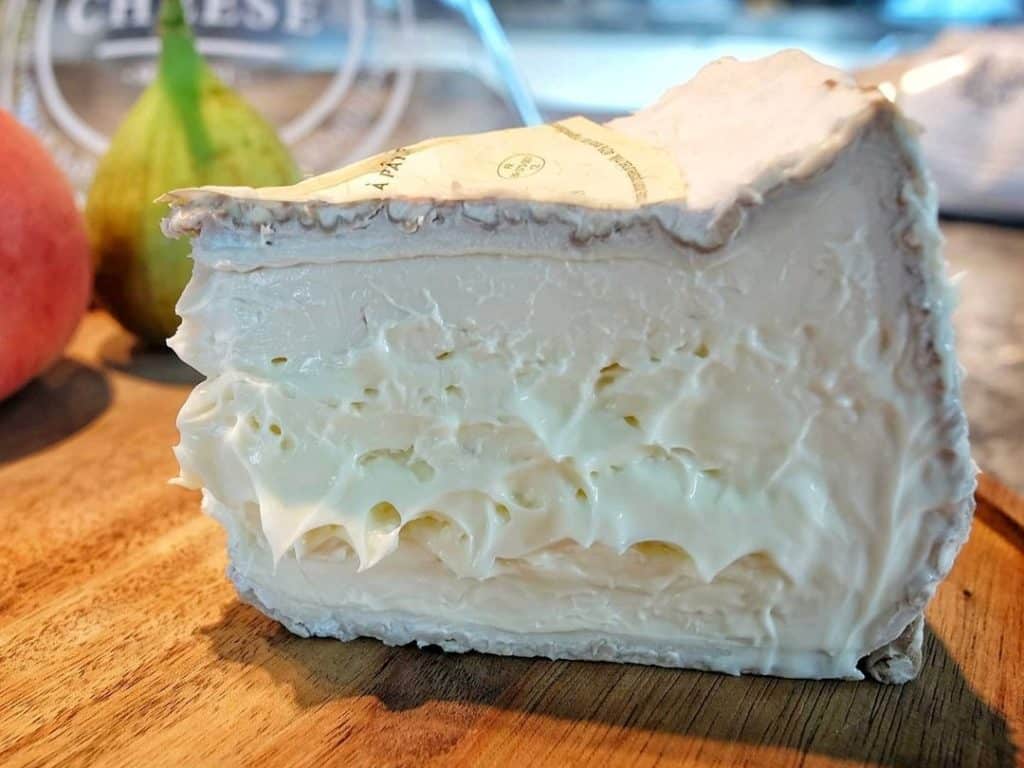
Next, Délice de Bourgogne is a decadent triple cream soft cheese made by Fromagerie Lincet in Bourgogne, France. The 2kg Délice de Bourgogne was invented by Jean Lincet in the mid 1970’s.
While his recipe remains a tightly guarded secret, the expertise has been passed down from father to son.
Visually, this triple cream delight has a velvety white rind and a pristine ivory pâte. Firstly, your nose will detect notes of mushroom and crème fraîche.
Next, you will discover its melt-in-the-mouth texture and subtle savoury and lactic taste. And, finally, the delicate flavours of cream and butter settle in.
Kunik
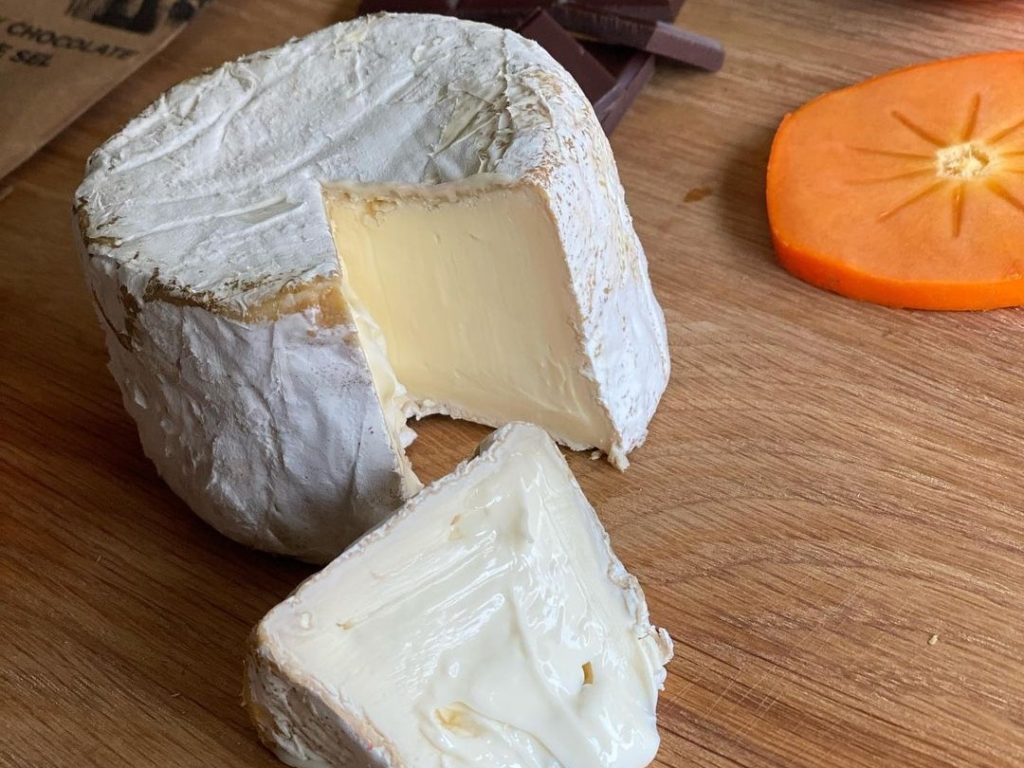
Representing the United States, Kunik is a mixed milk soft cheese made by Nettle Meadow Farm in the Upstate New York. Kunik is a First Nations word that means kiss. It is a truly fitting name for this sensual semi-matured cheese.
Nettle Meadow Farm’s signature cheese, Kunik, is truly unique. Handmade using 75% goat’s milk from the farm and 25% local Jersey cow’s milk cream, this triple cream will knock your socks off!
Overall, this soft-ripened cheese is best consumed quite young at 3-4 weeks. At that age, it sensually blends the lemony tang of the goat’s milk with the mushroom and butter notes of the cow’s milk. Even though its texture is quite dense, its paste still has an incredibly luscious mouthfeel.
Conclusion
As we wrap up our journey through the delectable realms of double and triple cream cheeses, it’s clear that these indulgent delicacies are more than just dairy products—they’re experiences, celebrations of craftsmanship, and testaments to the artistry of cheesemaking.
Whether you find yourself captivated by the smooth allure of double cream cheeses or enraptured by the decadent richness of triple cream varieties, there’s a cheese out there to suit every palate and preference.
These cheeses, with their velvety textures and nuanced flavours, have a way of turning ordinary moments into extraordinary ones, transforming simple gatherings into gourmet affairs, and making cheese platters the centrepiece of joyous occasions.
So, are you more team double cream or team triple cream? Let me know in the comments below.
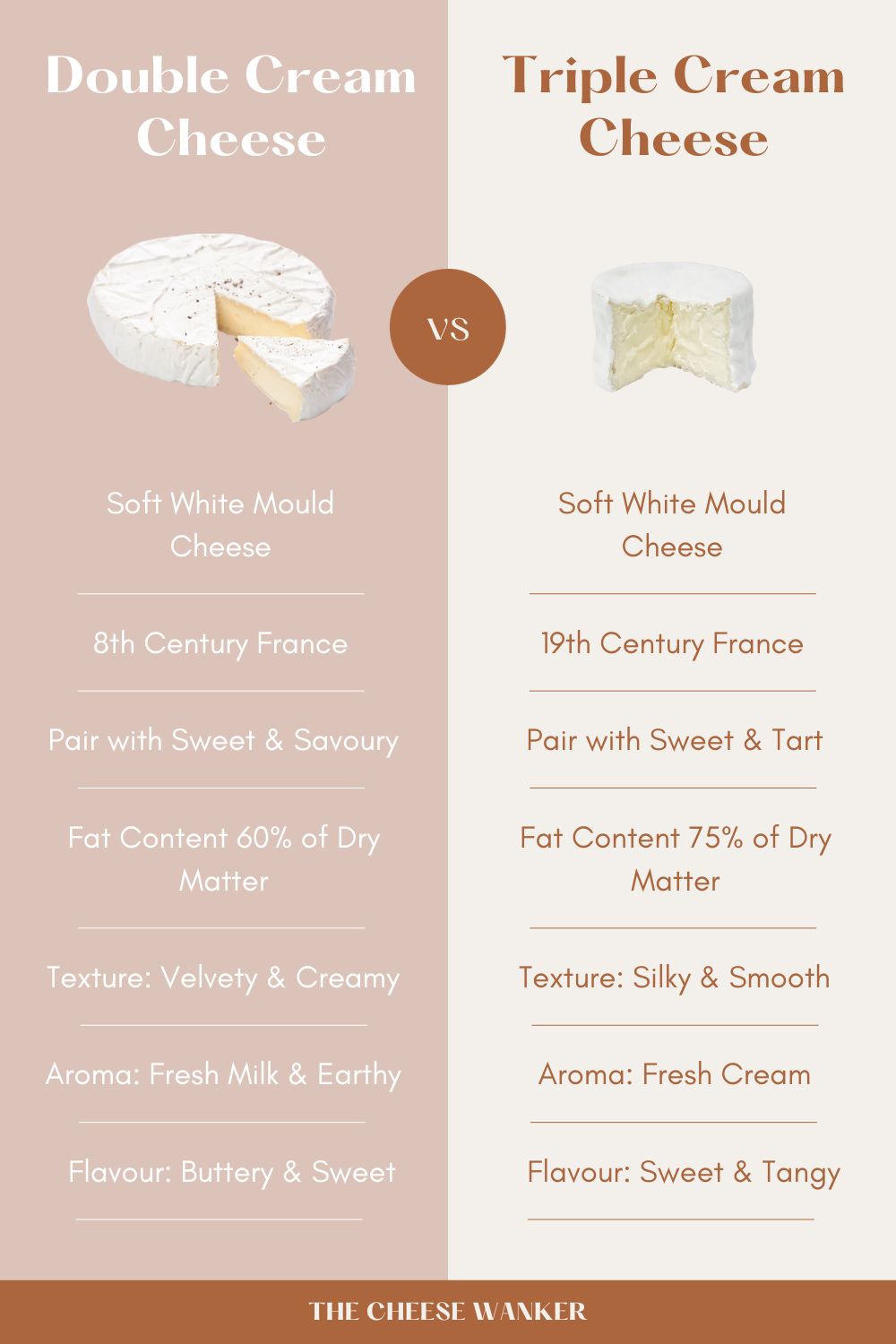
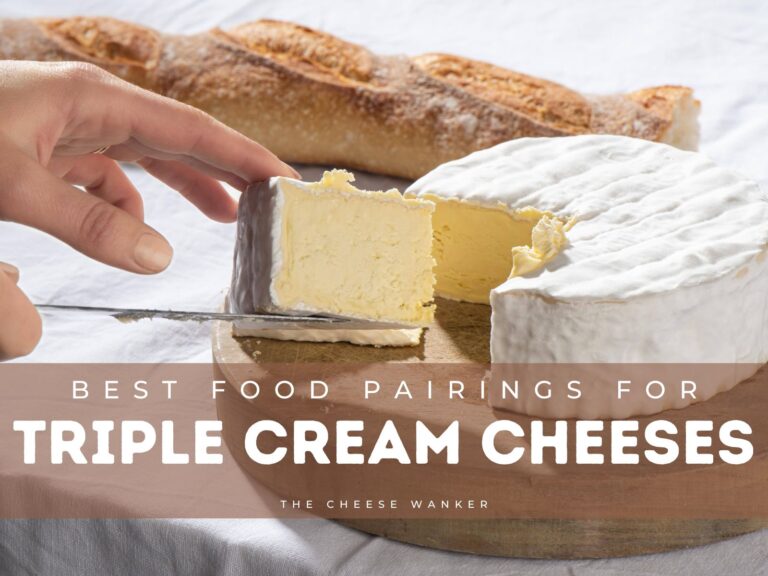
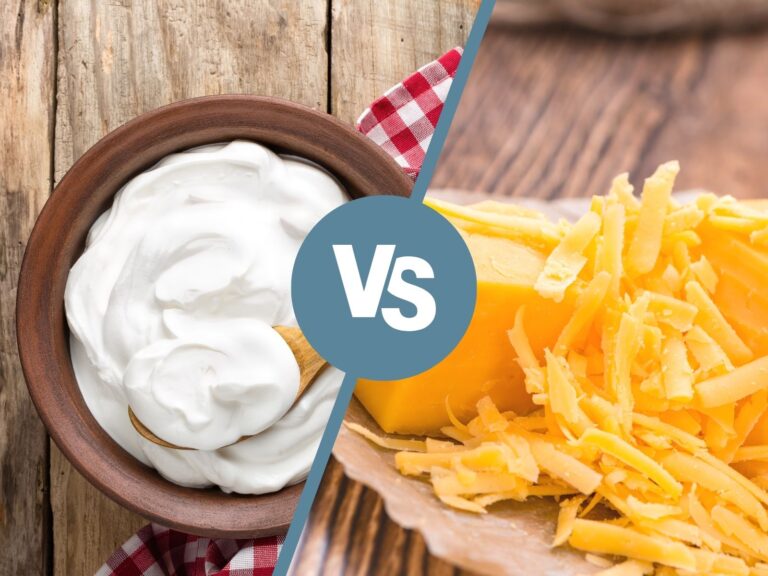
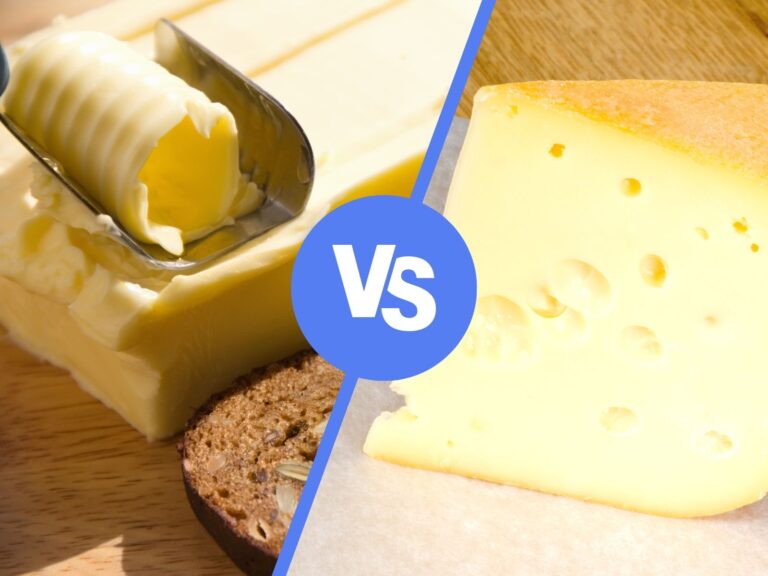
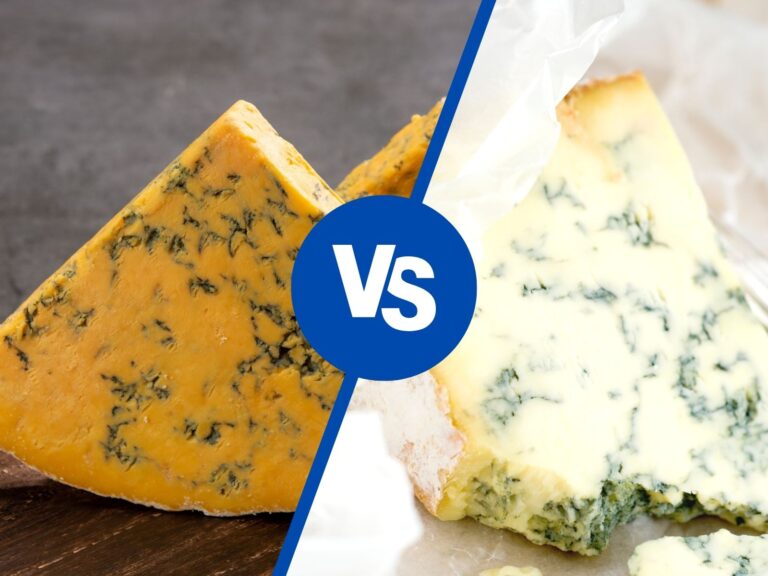
Great article! I’ve always wondered what the difference was.
Thank you
I prefer Delice de Bourgogne 💛 the texture, mushroominess (if that’s a word) and the saltiness.
Mushroominess is definitely a thing! Great choice.